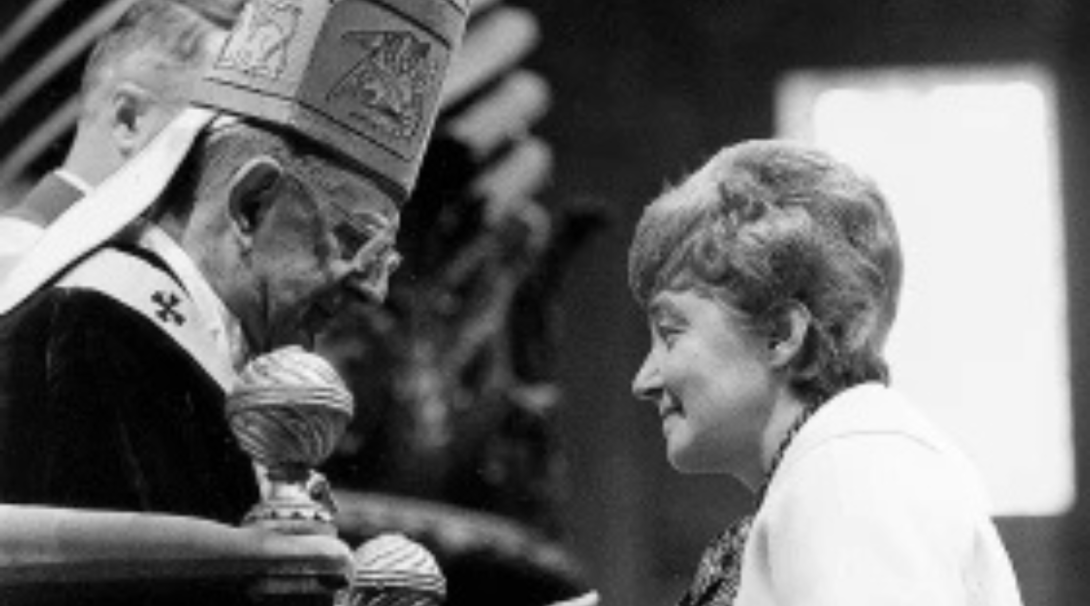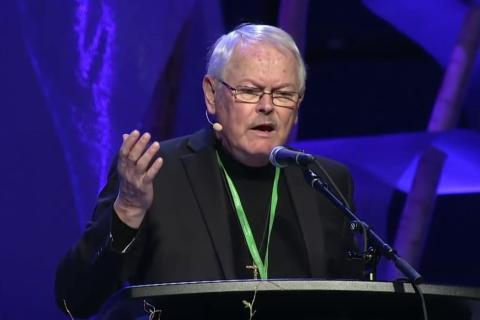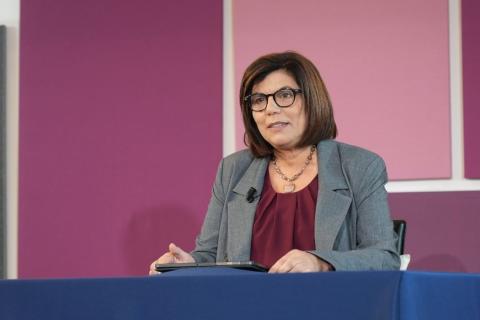The growth of the movement in the ecumenical field; friendships with Archbishop Ramsey and Patriarch Athenagoras; women religious; Gen 3 and New Humanity

Pope Paul VI gave his blessing to the membership of women religious in the Focolare
A 1967 article in Città Nuova (the first magazine of the Focolare published in Italy) — where Chiara Lubich is first mentioned as “Founder and President of the Focolare Movement” — states that Christians who are not Catholics can belong to the movement.
This shows how the ecumenical dimension of the charism of unity had developed. It was implicitly present from the beginning but could only really flourish in the years after Vatican II.
The Focolare’s statutes, which had just been approved, did not include this possibility, but life was already pushing further ahead. What had happened?
Once again, the roots could be found in the Mariapolis summer gatherings of the 1950s. In 1955 a member of the Swiss Reformed Church attended, followed by two Lutheran religious in 1957. After this Chiara visited them in Darmstadt, Germany.
On that occasion, in 1961, Chiara met some Lutheran pastors who were deeply impressed at how much putting the Gospel into practice was central for the focolarini. It marked the beginning of a deep friendship and collaboration that continue today, especially after the Ecumenical Center of Ottmaring would be established in Bavaria in 1968.
Early contacts
That same year, 1961, other seeds were sown in the world of ecumenism, through meetings in Rome with high profile members of various churches (Orthodox, Anglican, Reformed), as well as the founding of the Focolare’s Centro Uno, which aims at promoting ecumenical contacts.
The first results came a few years later. In 1966, during a visit to Canterbury, Archbishop Michael Ramsey invited Chiara to spread the spirituality of unity in the Church of England. In fact, it was an Anglican focolarina, who joined a focolare household community in 1970, who opened the way for many others of various churches.
In 1967, Chiara went to Geneva to the headquarters of the World Council of Churches. The council, which was founded in 1948, supports many ecumenical projects and includes Christians representing the most varied denominations from every corner of the world.
In conversation with some of its leading figures — such as Willem Visser’t Hooft, general secretary from 1948–1966, and Lukas Vischer, director of the Department for Faith and Constitution — it was clear that work in theological dialogue and in the social field needed a spirituality that was already uniting Christians.
They emphasized that diversity, if truly lived in love for one another, was not an obstacle, but an asset. It was the beginning of a long collaboration that saw Chiara returning to Geneva in 1982 and in 2002.
The Focolare’s statutes, which had just been approved, did not include this possibility, but life was already pushing further ahead. What had happened?
The Orthodox Church
As contacts multiplied, it is good to remember a special spiritual friendship. Athenagoras I, the Ecumenical Patriarch of Constantinople, had heard about the Focolare charism of unity and found it to be in tune with his ardent desire to reach “one chalice” between Orthodox and Catholics.
He invited Chiara to Istanbul eight times between 1967 and 1972. Over the course of 25 audiences, a deep spiritual, theological and personal exchange developed. Chiara provided Pope Paul VI with constant updates on these meetings, thus becoming a bridge between East and West.
This special relationship didn’t end with the death of Patriarch Athenagoras in 1972 but continued with his successors Demetrios and Bartholomew. The present-day ecumenical patriarch was one of the last people to visit Chiara in hospital before she passed.
A united people
Although these meetings with key ecumenical figures were important, they would have brought less fruit if there were not a Christian people behind it that was rich in its diversity yet united — a people that was not waiting for dogmatic and historic barriers to be overcome but already living unity. They knew to draw from the same source, which is the Word.
They can live with shared roots in the Father and can have the same Lord who is present wherever “two or three are united” in his name, in his love (Mt 18:20). They are a people that takes upon itself the pain of division, not running away from it but seeing in it the face of Jesus, who in his abandonment bridged heaven and earth, God and humankind.
In this way, the charism of unity is a response to the very calling of the ecumenical movement: discovering and following ways that heal the wounds of the past and lead to the rebuilding of full communion.
Other signs of new life
For the Focolare, these were years of growth, and not only in the field of ecumenism. The women religious from different congregations who lived the spirituality of unity, encouraged by the blessing of Pope Paul VI, found a way to be part of the movement.
In the world of youth, we saw emerge the Gen 3, as the third generation of the movement was called: adolescents who needed their own typical way of living an authentic Christian life.
Everywhere there was a need for unity, for that relationship of love among people that would transform the structures of society. The year 1968 marked the beginning of the New Society Movement, later called New Humanity Movement, which took on a commitment to bring the values and lifestyle of the Gospel into different sectors of society, aiming at those places and people with the greatest material and spiritual needs.
There were projects and developments in many different directions: In ecumenism and in the society, among young people and within the life of the church. But even though these might appear divergent or even in contrast with one another, they all began from the same root, from the same spirit. Putting the Gospel into practice, characteristic of the movement from its very beginnings in the 1940s, knew no boundaries.
The Word is the presence of Jesus: to live the Word means to make space for Jesus so that he can live in the midst of the world to transform it. It is enough to be “two or three” united in his name to form a small cell that can radiate out, a prophetic sign that a different world is possible.












